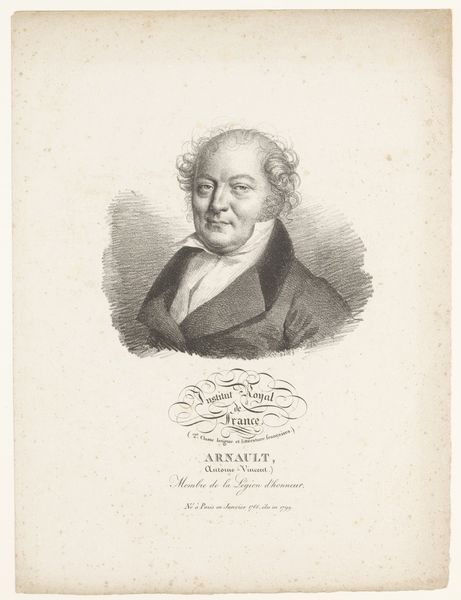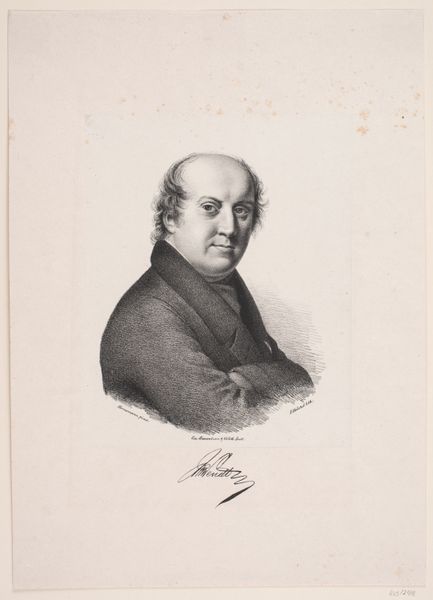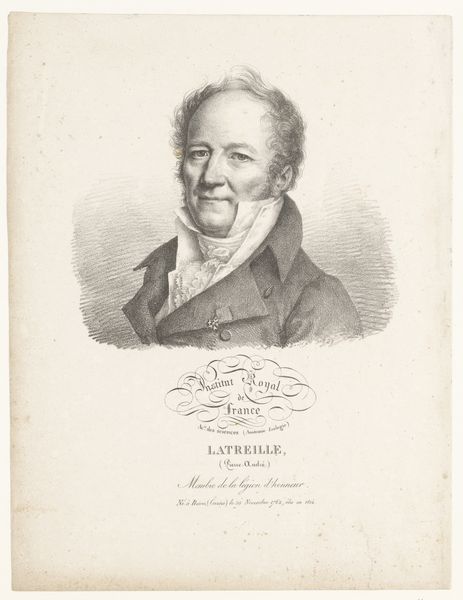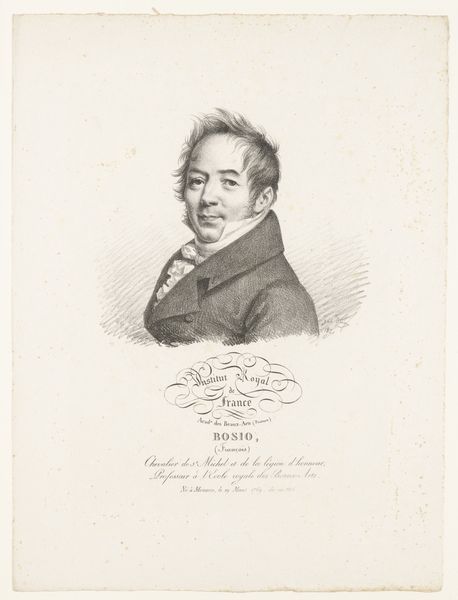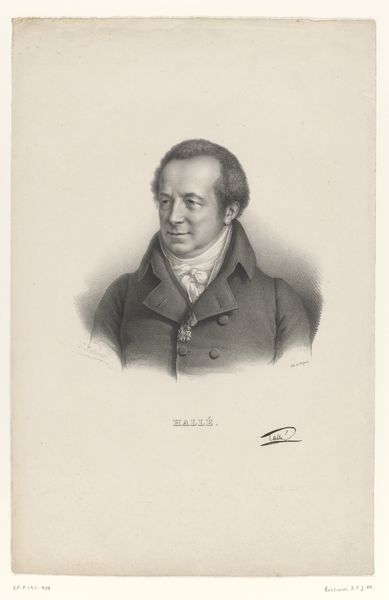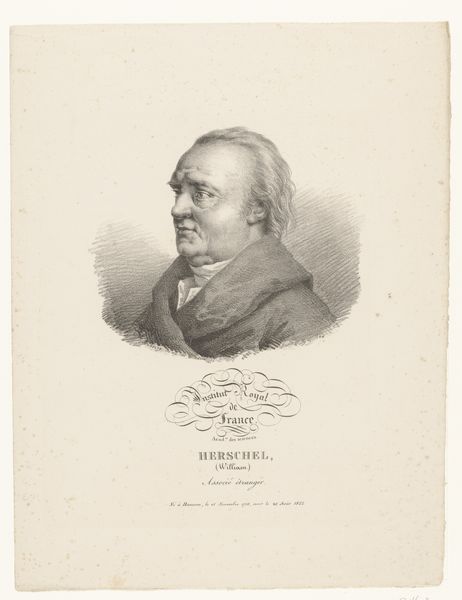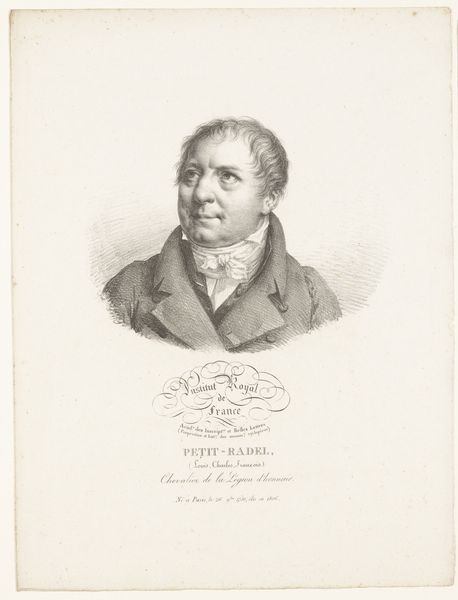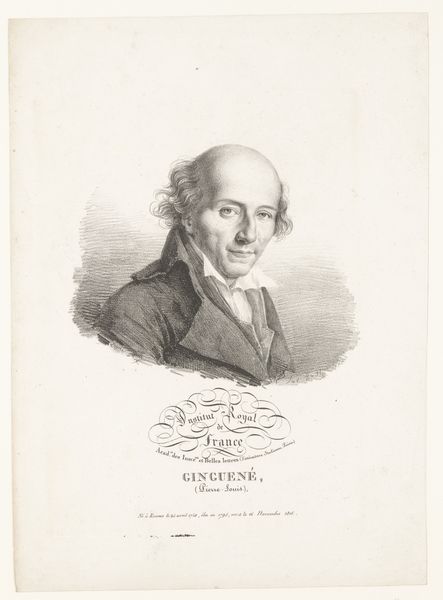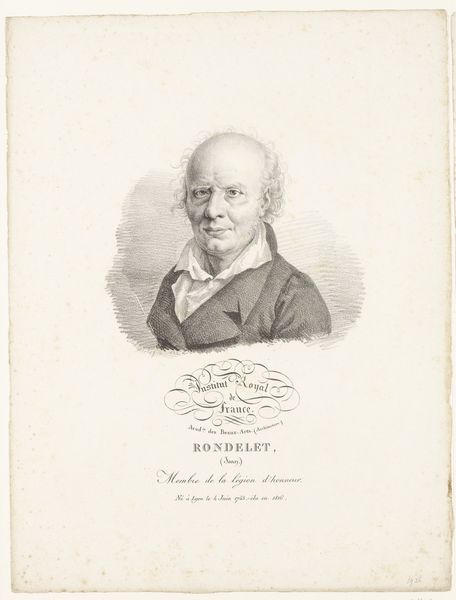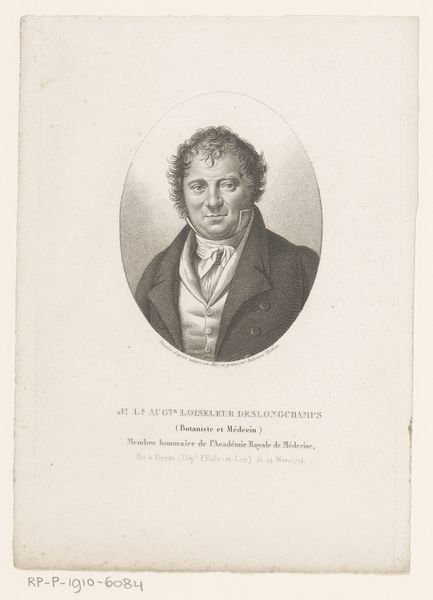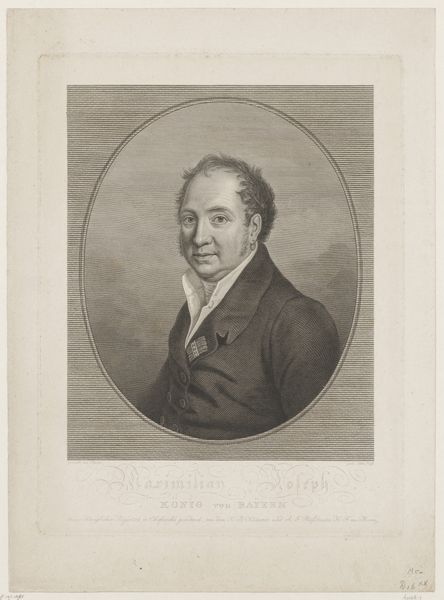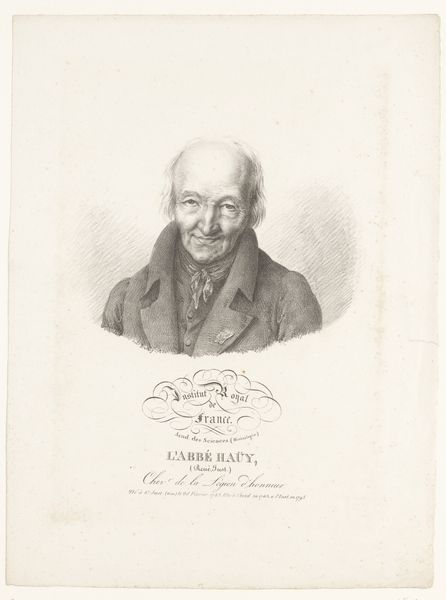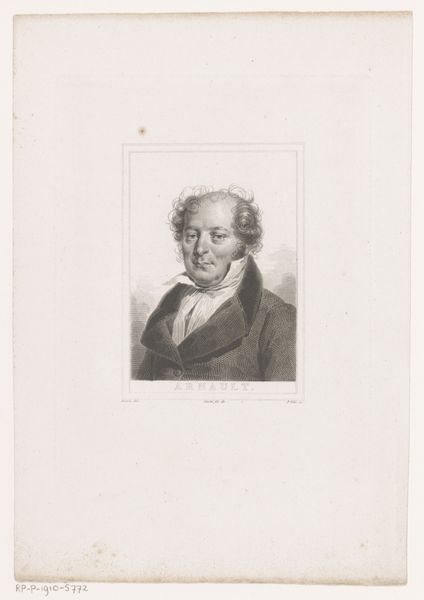
drawing, graphite
#
portrait
#
drawing
#
neoclacissism
#
pencil drawing
#
graphite
#
academic-art
Dimensions: height 357 mm, width 275 mm
Copyright: Rijks Museum: Open Domain
Curator: Julien-Léopold Boilly's portrait, rendered in graphite and pencil, captures Baron Charles Athanase Walckenaer in 1822. The artwork employs meticulous draftsmanship to immortalize a man of science. Editor: The somber yet confident aura of the subject leaps out. It seems intentionally framed to denote sophistication through its restrained monochrome palette. Curator: Walckenaer wasn't merely a man but rather an eminent figure deeply intertwined with the French scientific community. He was a respected scholar and politician who wrote books on geography and entomology. Boilly situates Walckenaer within the intellectual milieu of the early 19th century—a period of intense scientific exploration and emerging social hierarchies after the Revolution. The artistic approach thus reaffirms elite power structures during the post-Napoleonic era. Editor: Focusing purely on form, observe the texture Boilly achieves with the limited tones. The soft, diffused lighting highlights the volume in his face while contrasting sharply against elements like his collar. How might the artist leverage the contrast to invite us to ponder internal intellectual life versus external social presentation? Curator: Absolutely! It's hard not to consider the semiotics embedded into choices—like the cut of his coat or way he holds posture upright signifying upper crustiness. It makes you consider contemporary understandings of the bourgeoise subject against changing tides throughout France in the era. Editor: His receding hairline forms a perfect curve with both brow lines while echoing similar compositional gestures via his turned lapels--a subtle dance emphasizing harmony overall though seemingly conservative given the artistic choices during the timeframe involved. Curator: Seeing through your angle illuminates other pieces--like inscription near the portrait root us both the legacy through not the artist via form instead framing identity! Perhaps an art is useful when seen in both lens! Editor: Indeed--between artistic method for cultural dialogue lies hidden truth about art's ability mirror identity form time past/future too.
Comments
No comments
Be the first to comment and join the conversation on the ultimate creative platform.
